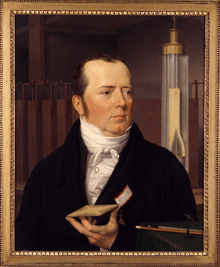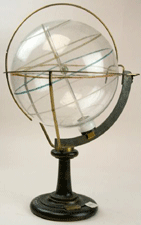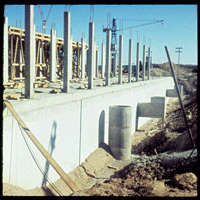The Technical University of Denmark (Den Polytekniske Læreanstalt) was founded in 1829 with Hans Christian Oersted as its first Director. Since the very beginning, the University has emphasized the role of physics in the engineering education. Until 1876, physics was taught by professors holding joint positions with the University of Copenhagen. The first such professor was H. C. Oersted who in 1820 had published his famous paper explaining the relation between electricity and magnetism.

H.C. Oersted
A significant collection of Oersted electrification machines still exist, and some are still in the position of the Department of Physics. The Department also takes care of a collection of books and journals, some of which date back to the successors of Ole Roemer (1644-1710), the Danish astronomer who in 1676 determined the speed of light from observations of Jupiter's moons. The collection is managed by the History of Technology Division situated at DTU Physics.

Artefact from DTU Physics historical collection
In 1876 both the teaching of physics and the associated scientific activities were separated from those of the University of Copenhagen, and the first Physics Laboratory of the Technical University of Denmark was established in 1907. The development of quantum mechanics and its applications to atoms, molecules and solids in the first half of the 20th century gradually opened the avenue for a great variety of technical applications, and when the University in the 1960s moved from the city of Copenhagen to its new campus in Lyngby, physics was one of the first fields to move.

Photos from the construction of DTU Physics' building 309
Benefiting from a significant expansion in resources and space, a number of new professors were hired each with their own laboratory and with a staff of young researchers. Research was centered around the electronic, magnetic, mechanical and optical properties of solids, but there were also efforts in nuclear reactor and gas discharge physics. As the industrial interest in these areas grew, some of the fields (particularly microeletronics) was moved out of the Basic Research Faculty to become part of the new Microelectronics Center (MIC).
With the gradual broadening of the research interests, the many small laboratories lost their basis, and in 1993 all research and teaching in physics at the Technical University of Copenhagen was brought together in the Department of Physics. Among the driving forces for the Department's further development was the Center for Atomic-scale Materials Physics (CAMP) and the Interdisciplinary Center for Advanced Catalysis (ICAT). But the Department continued its work on the magnetic, optic, superconducting, etc. properties of various materials and also established significant activities in biological physics and complex systems.
Today the Department is prepared to undertake the challenges associated with the nano-, bio- and information sciences, that currently are at the center of interest in the Danish as well as in the international community. We are in the process of hiring new experimentalists in the fields of quantuminformatics (spintronics or photonics) and complex phenomena in fluid flows.